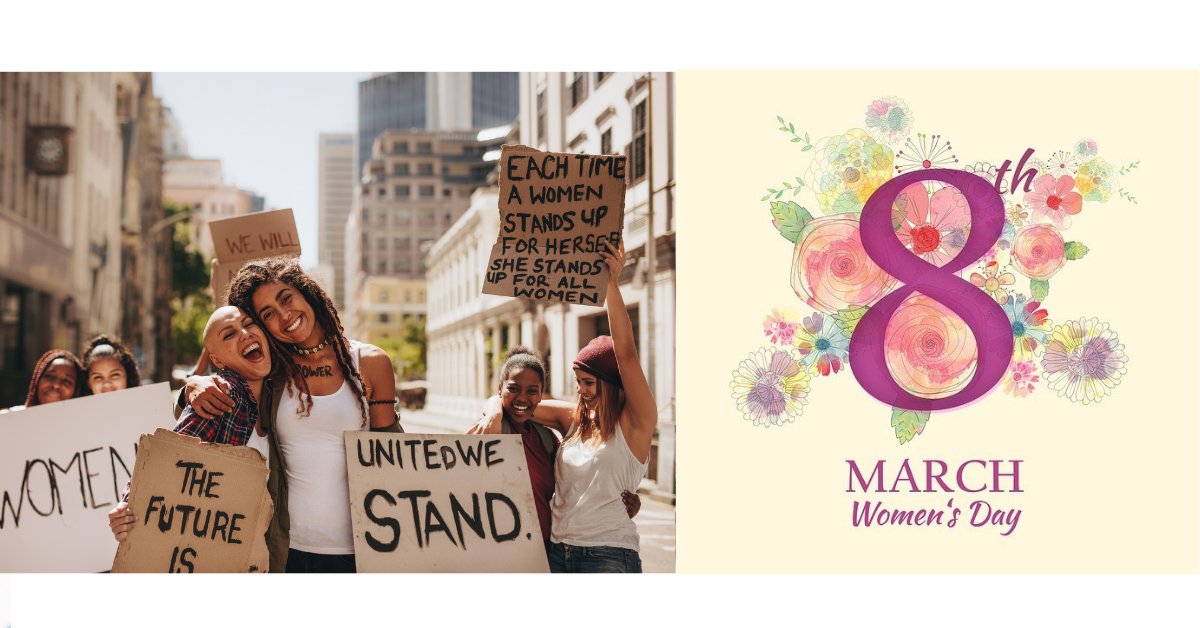Pakistan’s Paradoxical Phobia Against Gender Equality
March 8
As the world marks International Women’s Day, two parades in Pakistan – the Aurat March and Haya March – are scheduled to happen and the same time and same place. The problem though, as Pakistani correspondent Sarmad Shahbaz points out, is that these groups have radically different approaches while claiming to share the same goal. So, how will both truly support the rights of women while remaining in opposition?
I was driving to my alma mater on the afternoon of Friday, March 4, when I saw a poster wired with a bamboo stick on a signal pole. This poster was annexed, probably, with all of the erected traffic signal poles on Srinagar Highway in Pakistan’s federal capital. At first glance, it appeared quite absurd; the poster looked like an invitation but depicted the fear of Pakistani sigma males (as they call them). But the true meaning appeared when I connected the dots. The qualms were written in opposition to the controversial Aurat Azadi March.
The Aurat March takes place on International Women’s Day, celebrated on March 8. Those who take part call for society to progress, to accept women’s freedom and equality to men. But that poster I saw was an invitation of a similar kind of revolutionary protest for women’s rights, except under the sheet of religious rewording (Katju n.d.)s. It was an invitation to the Haya March (Modest March), a parade designed specifically to counter the progressive movement and maintain the status quo under a patriarchal society. Its slogan, written as “Modesty my Jewel, Hijab my Respect” (Haya Mera Zewar, Hijab Mera Waqar) is supposedly to oppose the “Mera Jisam, Meri Marzi” chant of the Aurat March which promotes self-autonomy.
Never mind that I am too liberal for the conservatives and too conservative for the liberals. Perhaps, I just want everyone to be cognizant of the reality of feminism. To give you a little background, feminism has a long history of more than five centuries of practical execution. At the time when Christian Reformation leader Martin Luther was separating the traditional Church-rule model in Europe and denouncing religion that meddled into people’s personal lives, initial feminism was getting started by writers including Christine de Pisan. Later, with the enlightenment, multiple feminists rose for their rights until various waves of feminism erupted throughout the last two centuries. You see, feminism and religion are two separate debates. But a woman, before becoming a woman, is a human first.
No one can read the designer’s mind but I thought it ironic that the poster, while claiming to be for a revolutionary protest for women’s rights, was the opposition of the Aurat March. The parade for women’s modesty, as the poster’s subject signified, was more so a way for Pakistan’s patriarchal society to continue to flex its power. The inclusion of religion in this parade is an attempt by the system, led by men, to either subdue the opposite gender or to maintain the existing state of affairs. Contrary to what it professes, it has not demonstrated that it really cares about women’s rights.
No kind of sympathies have been given to the females on the fractured wall of this country. When former president Zia took Islamization as the tool to repress women and unarmed men, there were only a few secular men who marched for the rights of women. Women’s Action Forum (WAF) of the early eighties shouted for their rights against harsh radical Islamist behaviour against them.
They were baton-charged and humiliated. Where were the so-called supporters of “Modest Women March” at that time? It is pivotal to note that along with liberal women, there were females from all kinds of backgrounds in the WAF. In the third decade of the 21st century, why have these factions suddenly started flexing their muscles for women’s rights? It is a pity that the political parties are pitting women against women under the guise of religion. It is also ironic, considering Islam, the most pious religion, has considered women equal or above men.
Multiple Quranic verses witness the superior role of women in spreading the religion. However, Islam hates those who have used the ploy of religion for anarchy. I am not suggesting that this is the aim of the Haya March. It might be possible that their intentions are for the better good. But, the timing and place of this march seem devised just to directly counter the Aurat March. So, on International Women’s Day, at the same place and same time, one side of women will be protesting for equal rights for both genders. On the other side, there is going to be a group of women in opposition (not men, because they cannot directly confront the women of the Aurat March).
Having two contradictory marches with same aim but opposite and extremist viewpoints will not only create an atmosphere of animosity but it can also rupture the social fabric through clashes of women against women. These tactics have been prevailing in Pakistan for a long time. Hostility through a proxy, whether in social, cultural, or political spaces, has always disturbed the equilibrium of the overall system. If you truly want to support women and their rights, why not try a new thing? Embrace women for who they are and accept their request to be seen as equal.
Today, when the world is progressing towards an inclusive society, the religious fanatics are reversing this progress, not through violence but strategic schemes. Socio-cultural dynamics are evolving but when gender equality is to be considered, the ruthless world run by men wants to remain stagnant.
It is high time for the Pakistani society to think outside of the box. Learn, not only from the relevant history i.e., Islamic and Pakistani, but from the history of those who have progressed and now rule the world. Breaking the shackles of ignorance is what is needed to make a gender-equal country that defies insecurity and timidity.
Photo Credits: Canva
About Sarmad Shahbaz: He is a Pakistan-based Socio-Political Analyst with keen interests in Politics and Philosophy. He can be reached out at Sarmadshahbaz333@gmail.com






